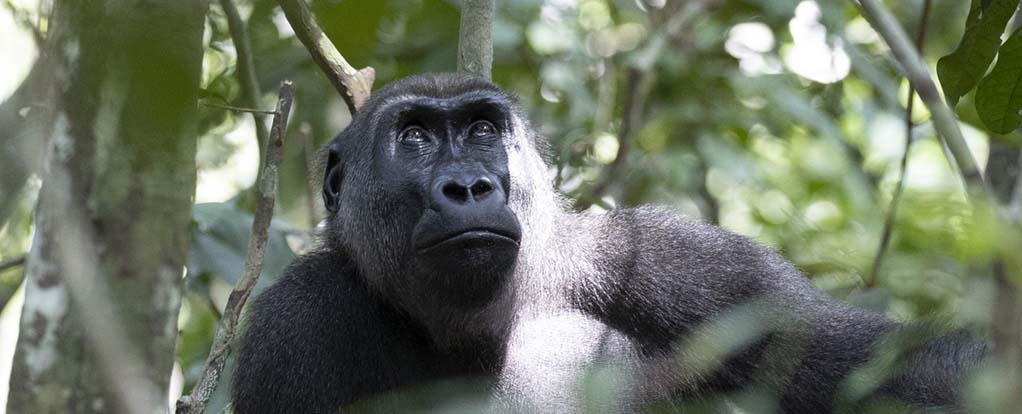Gorillas and humans alike have long sampled the rich diversity of plants that grow in the humid rainforest of Moukalaba-Doudou National Park, in the central African country of Gabon.
Side by side, we have uncovered plants that not only nourish us, but sometimes heal us, and now a scientific study unpacks this knowledge, long-held by local traditional healers and herbalists.
“Several studies have shown that plants from the diet of great apes, including western lowland gorilla, are also used as medicinal plants by healers in traditional African medicine,” the study’s authors report.
The research was led by bacteriologists Leresche Even Doneilly Oyaba Yinda and Richard Onanga from the Interdisciplinary Medical Research Center of Franceville in Gabon, who describe the country’s exceptional biodiversity as a “vast reservoir of unexplored potential active biomolecules.”
In a study back in 2022, residents from a village near Moukalaba-Doudou National Park described the use of certain plants not only by their community in traditional medicines but also by the western lowland gorillas (Gorilla gorilla gorilla) living nearby.
To investigate this further, Oyaba Yinda and colleagues analyzed the bark from four of these trees – the kapok or fromager tree (Ceiba pentandra), the ekanhou or giant yellow mulberry (Myrianthus arboreus), an unspecified ficus subspecies, and African teak (Milicia excelsa) – for antimicrobial and antioxidant properties, along with any compounds that might be involved.
All four plants showed antibacterial activity against at least one strain of multidrug-resistant Escherichia coli bacteria. Bark crude extract from the fromager tree showed “remarkable activity” against every multi-drug-resistant E. coli that had the misfortune of being plunged into its beaker.
The ficus subspecies, along with the African teak, showed the strongest antioxidant activity of the four plants. The researchers noted that preparation – whether the bark extract was dissolved in ethanol or water – made a difference to antioxidant levels.
They also detected relatively high levels of medicinal compounds including phenols, alkaloids, flavonoids, and proanthocyanidins in all four plants.
The authors say these qualities may justify their use in traditional medicine for diarrheal diseases, along with diseases related to the overproduction of reactive oxygen species, which are fought by antioxidants, and diseases caused by E. coli infection.
“Alternative medicines and therapies offer definite hope for the resolution of many present and future public health problems,” Oyaba Yinda and colleagues say.
“Zoopharmacognosy is one of these new approaches, aimed at discovering new drugs.”
But that’s not to say we should all start eating the bark of these plants. For now, there’s no clinical evidence of just how effective these treatments are, or whether they come with any side effects.
We also don’t know for sure that the gorillas are eating bark from these trees to treat ailments in the same way we humans do, or simply as an extra food source that happens to be giving them a few extra benefits.
Either way, the researchers say, “the immunity-enhancing consumption of certain plant items (such as bark) by gorillas could be responsible for their ability to host and control these infectious microorganisms without developing serious disease.”
These findings also highlight the importance of protecting areas of remnant vegetation, like Moukalaba-Doudou National Park, which harbor not only a diversity of living things, but of the chemical compounds they produce.
This study was published in PLOS One.





